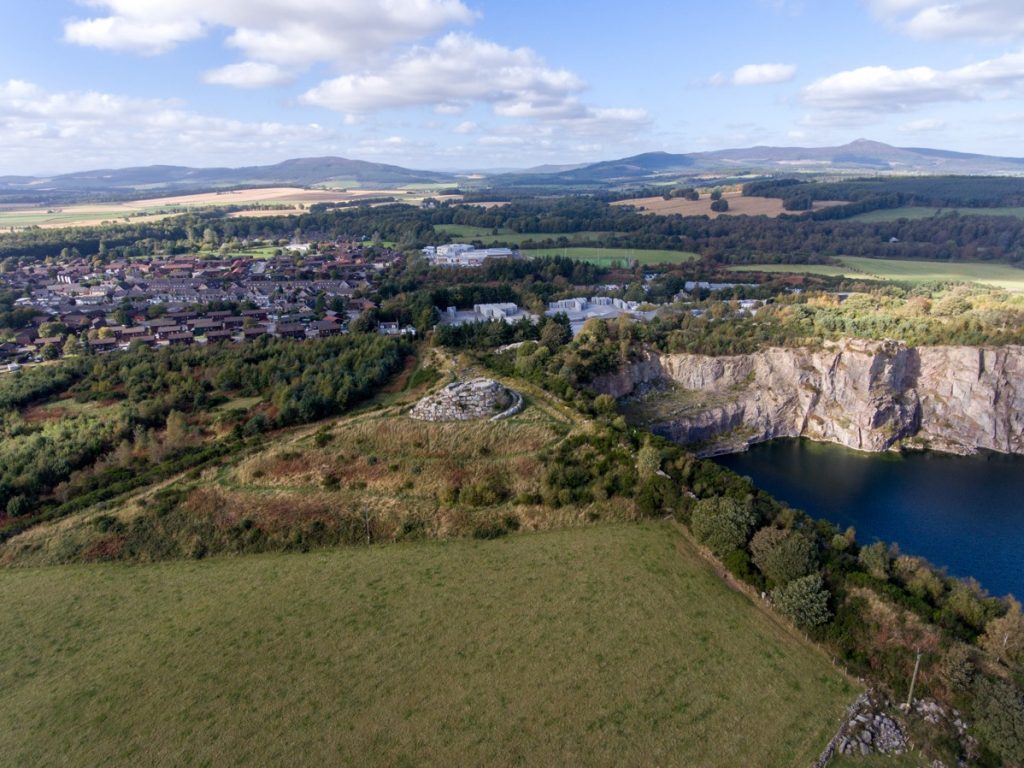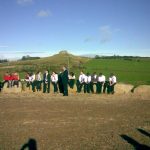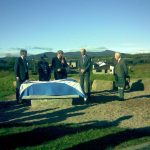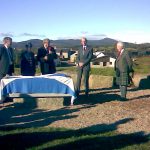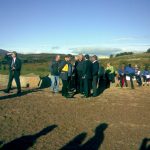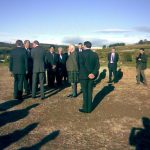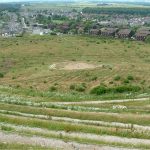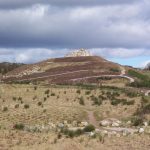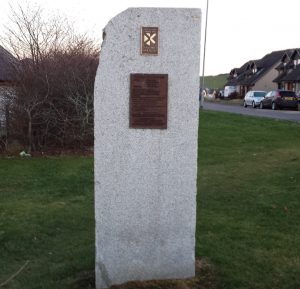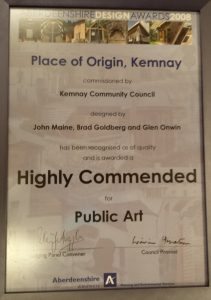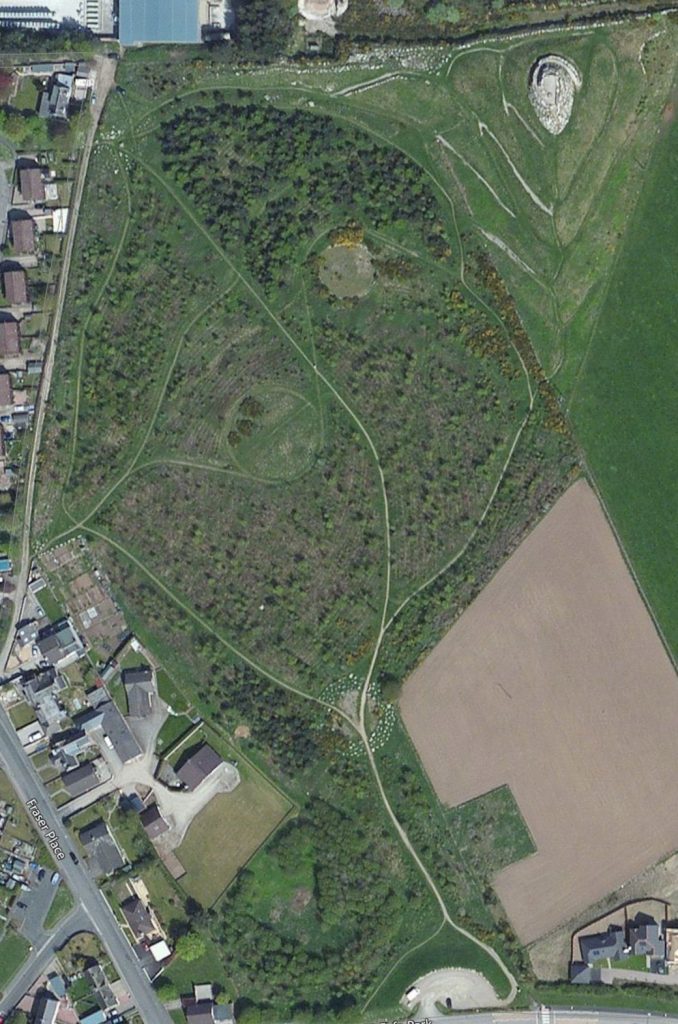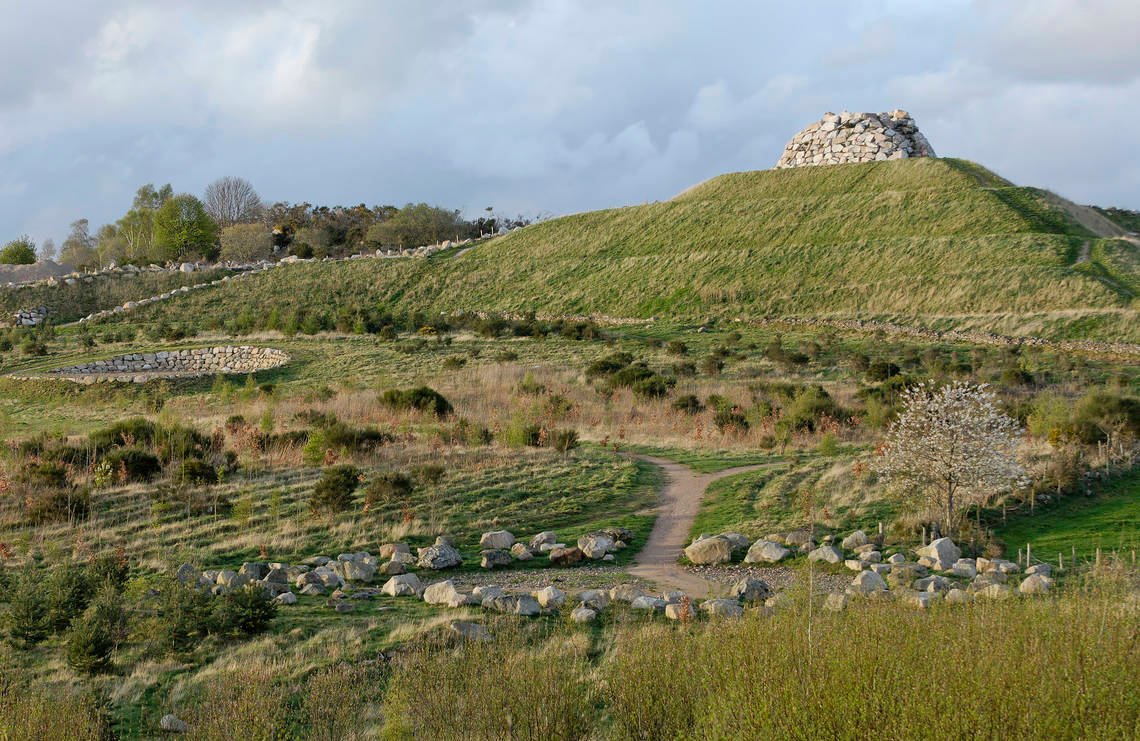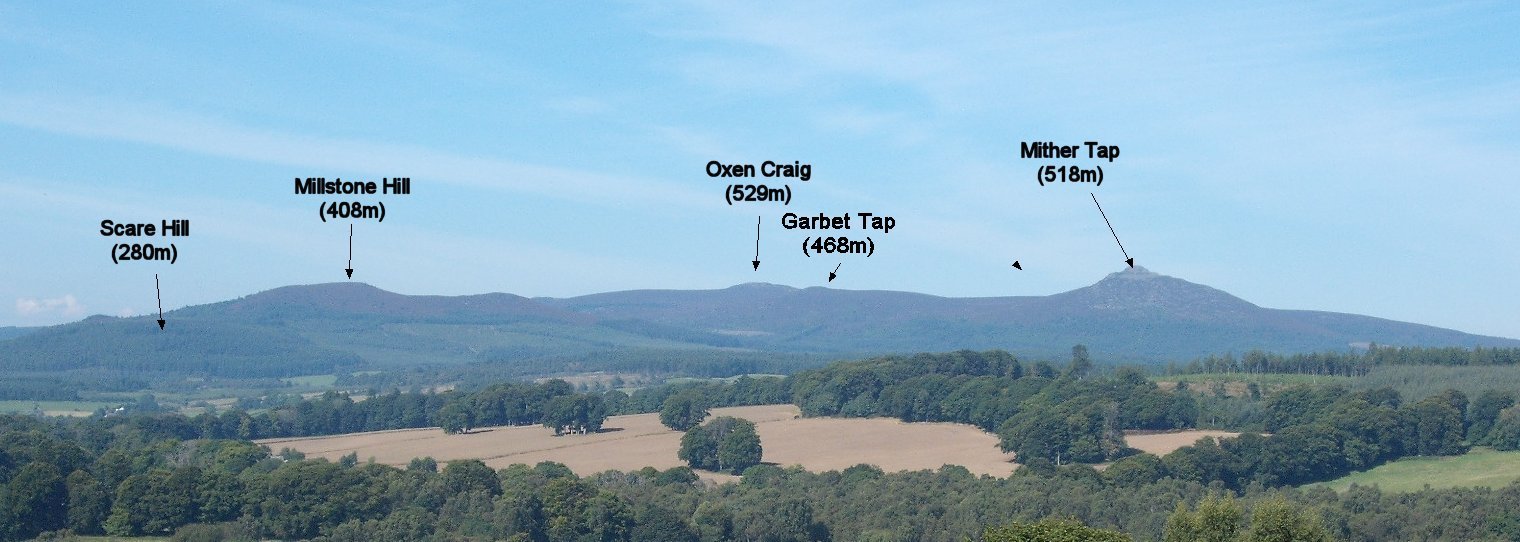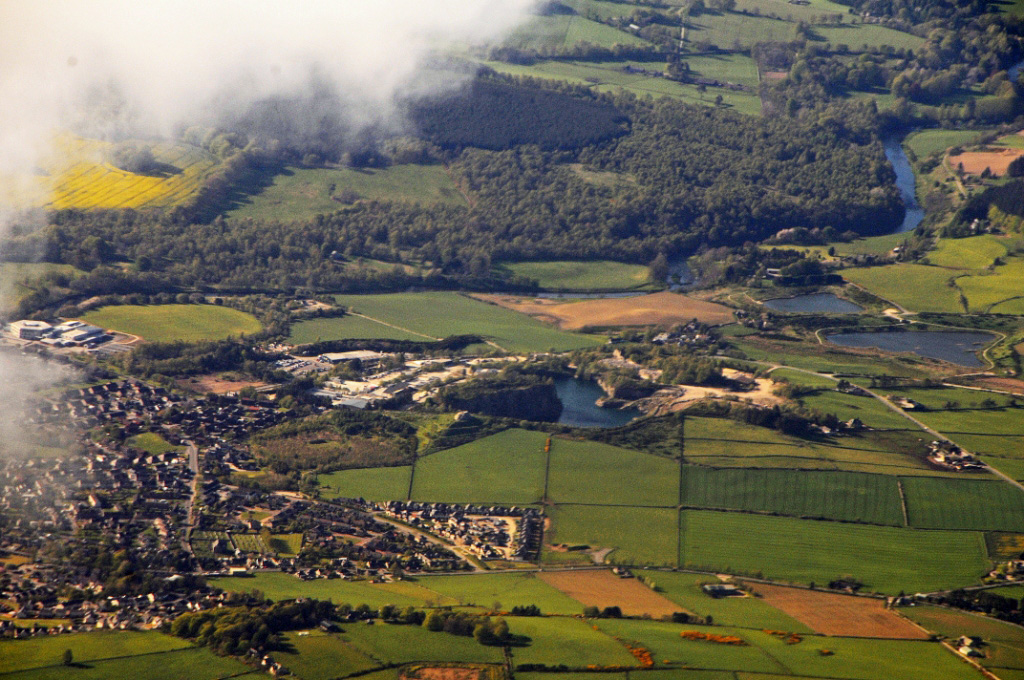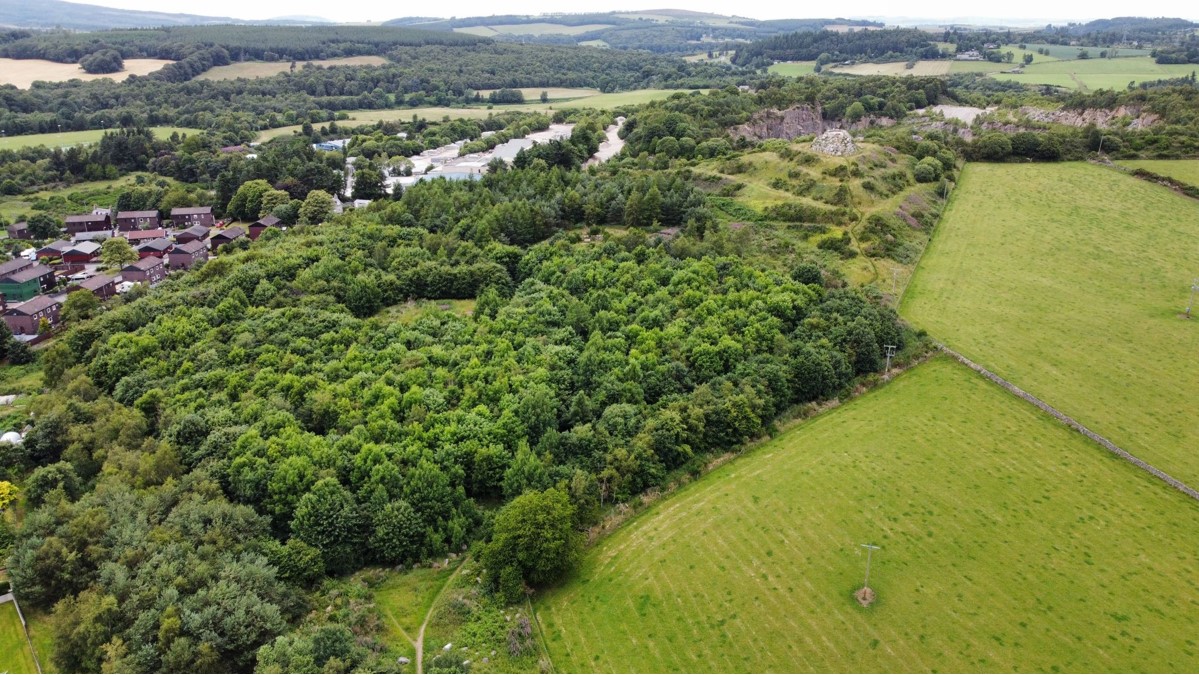Place Of Origin
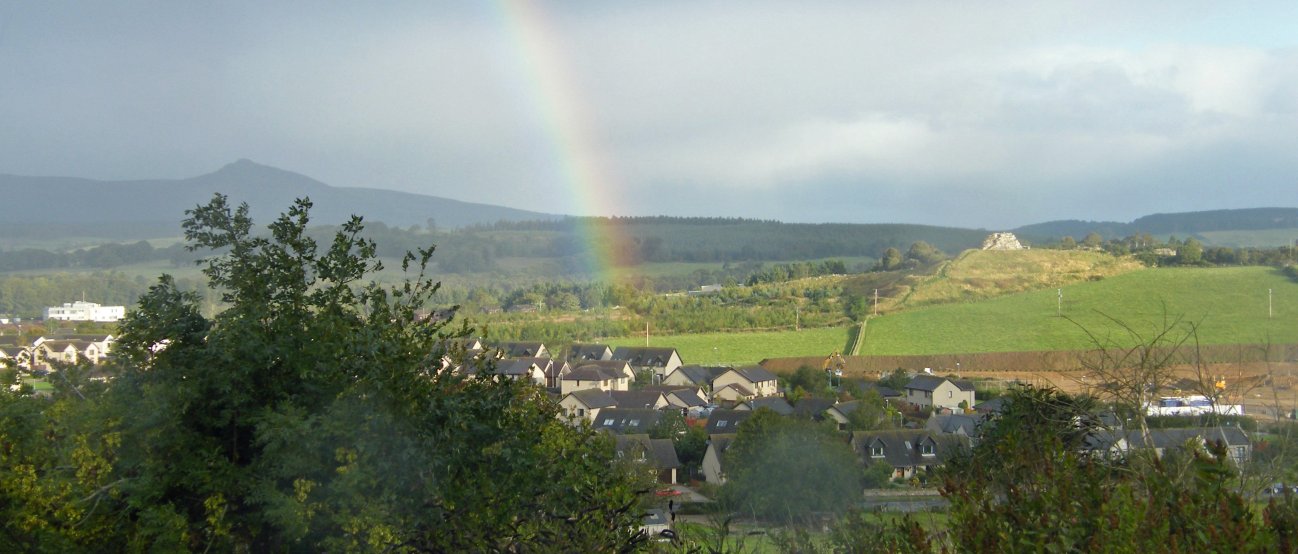
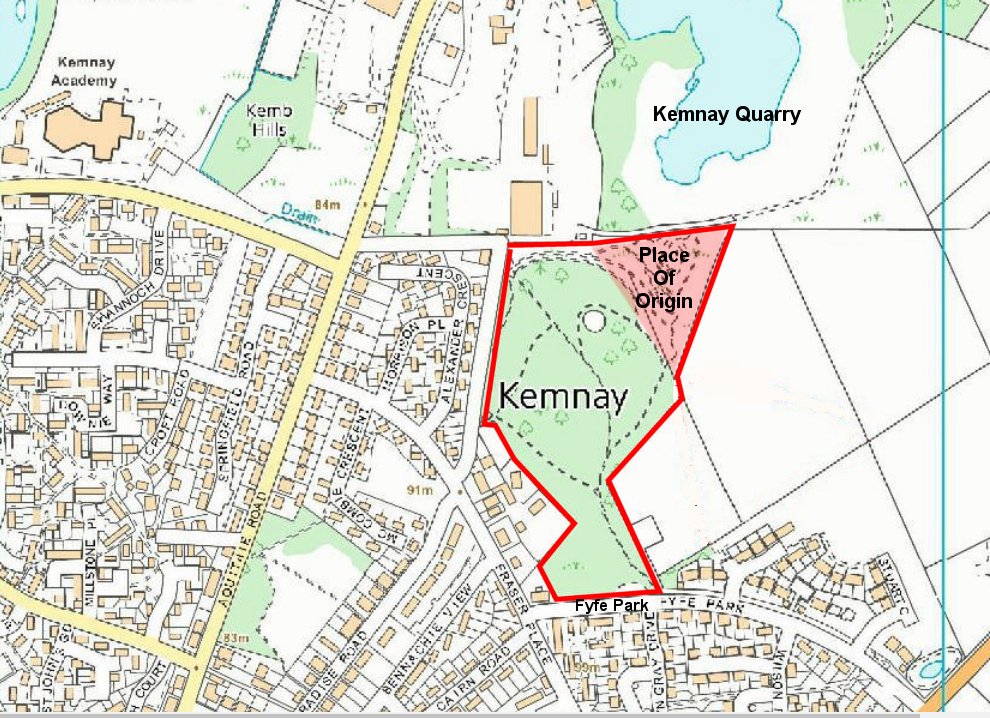
Place of Origin is a ‘landscape as art’ project. Work commenced in 1996 and was completed in 2006, when it was officially opened by HRH The Duke of Kent on 30th October 2006.
In 2007, the following year, it received a Saltire Award, which is commemorated by a bronze plaque at the site entrance. Two years later in 2008, it was Nominated in the Aberdeenshire Council Design Awards Scheme and won a Highly Commended Certificate
Chris Fremantle, who was Director of The Scottish Sculpture Workshop at the time, invited John Maine to lead a project which addressed the history of granite quarrying in the North East of Scotland as part of the 150th anniversary celebrations of Kemnay based John Fyfe Ltd. The creation of Place of Origin was always seen by the Artists as an alternative to a quarry museum of a more formal kind which would have needed high maintenance costs. In contrast to Archaeolink, a sustainable landscape does not require Staff costs and regular overheads. The result is the creation of a natural woodland, with stone features leading up the hill to a vantage point, where people could see and enjoy the post-industrial quarry of Kemnay, and can connect the old workings (now a cliff bound lake), to the surrounding landscape as far away as Bennachie and including the original core of Kemnay.
The three artists who collaborated on Place of Origin were John Maine RA, Brad Goldberg and Glen Onwin RSA. Chris was at that time just taking over from Fred Bushe OBE as Director of the Scottish Sculpture Workshop. Chris took advice from Board Members and colleagues. His aim from the outset was that the project should be artist-led. By this he meant that, where previous symposia had simply been artists sharing space and facilities but pursuing their own projects, in this case there should be an artist who led a group of artists. At that stage Chris did not envisage a collaborative project such as resulted, rather that there be some dialogue and planning around the relationship between works and to the site.
The viewpoint, constructed out of some 100,000 tonnes of quarry waste and other subsoil material, takes its cue from a number of key visual characteristics of the locality. These include most obviously Bennachie, which forms a major landmark in Aberdeenshire. The work also draws inspiration from the Quarry itself, and in particular the construction of retaining walls and platforms. More generally Maine, Goldberg and Onwin looked at the North East and Highland landscape including Neolithic recumbent stone circles typical of the North East, the Brochs on the Western Isles, and other man-made marks on the landscape characterised by the use of stone. Each massive stone that forms the upper structure of the viewpoint was selected and placed individually, drawing on the expertise of the quarry men and the judgement of the artist.
A quote from John Maine
May 2016
“Place Of Origin has now become a well loved part of Kemnay and we are delighted that the history of quarrying has remained a part of the unique quality of the village landscape. Place of Origin is meant to remind people of the underlying source of geology and industry, while at the same time providing a natural landscape in the heart of the village, with access to all.”
April 2010:
“The underlying idea of Place of Origin was to lead people to a vantage point from which the Kemnay quarry would be revealed. In order to let viewers see the drama of the quarry without actually being exposed to the dangers of granite cliffs, we built a hill with a viewing platform high above the quarry workings. This also made a panoramic link with the village and surrounding landscape of fields, woods and mountain. The hill is made from granular material which was compacted in layers and tested throughout for stability. This material had to be fairly consistent without excessive boulders or areas of alluvium. It took more than two years to amass the 100,000 tonnes of material and allow it to settle in courses. We used quarry waste and locally excavated material.
At the top of the hill the final section is constructed from large quarry blocks, set together in the normal method for constructing gigantic retaining walls throughout the quarry. An example of this style of construction can be seen from the road near the former Lawrence of Kemnay site. Looking across the road to the left of the entrance to the stone works there is a rock tower structure set back a little. This was the base of one of the ‘blondins’ – steel towers which supported cables across the quarry hole.
Our ‘cairn’ was made with the help of huge trucks and cranes. We would set out a circle of quarry blocks and then fill the middle with granite chippings. We were fortunate to discover a large mound of these chippings in the quarry yard. In the nineteenth century, when small granite road blocks (‘cassies’) were chipped out with hand tools there was a gradual accumulation of small pieces split off. Over the decades these became a mound and provided a perfect medium for the core of the hill top. This final stage is therefore granite through and through.
As artists we also had in mind the impact in the landscape of castle structures such as Dunnideer near Inch and Hall Forest near Kintore as well as many structures further away. We travelled together to the Outer Hebrides, visiting brochs as well as prehistoric sites such as Calanish. The Clava Cairns were also an influence.”
Maine, Goldberg and Onwin suggest that Place of Origin shares an aesthetic with a Japanese garden – it reflects the larger landscape it sits in. This Japanese concept is translated as ‘borrowed landscape’, which is used in Japanese garden design to bring the larger landscape into the garden. The artists set out the tree planting to mirror the larger landscape. So at the bottom of the site you will find willow and in the middle birch and oak and in the upper areas pine and larch. The summit provides a special view, and Place of Origin conforms to the more general statement, “the garden was planned for the sake of enjoying scenery.”
Read the rest of Chris Fremantle’s story
Photos
View from Place Of Origin towards Bennachie
Place of Origin was supported financially and in-kind by John Fyfe / Aggregate Industries as well as the Scottish Arts Council National Lottery; the Scottish Executive’s Aggregate Levy scheme, the Esmée Fairbairn Foundation; The Hope Scott Trust, and other trusts and foundations; RB Farquhar Homes; and Aberdeenshire Council.
Recent photos 2023 taken by Laura Downie
- Place Of Origin 2023 LD
- Place Of Origin 2023 LD

